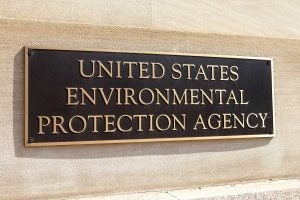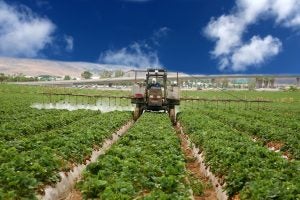The U.S. Department of Justice, on behalf of the U.S. Environmental Protection Agency, has finally resolved longstanding litigation covering over 1,000 pesticide products.
Litigation included reviews and approvals of the pesticides safely and protectively, ensuring that endangered species were protected. The settlement will put the EPA on track to regulate pesticides more tightly and more fully consider the effects on imperiled species when it evaluates pesticides.
In 2011, the Center for Biological Diversity and Pesticide Action Network filed a complaint in Federal Court in California against the EPA, alleging that it was violating the Endangered Species Act when it registered or re-evaluated the registration of 382 pesticide active ingredients, which was ultimately reduced to 35 active ingredients covering over 1,000 pesticide products containing one or more of these active ingredients.
This became known as a “megasuit” because of the number of crop protection products it covered. The settlement entered by the court this week resolves all outstanding claims.
“This agreement is a win-win-win to protect endangered species, ensure the availability of pesticides needed to grow food across America, and save considerable time and taxpayer expenses required to further litigate this case,” said Assistant Administrator for EPA’s Office of Chemical Safety and Pollution Prevention Michal Freedhoff. “This settlement allows EPA adequate time to fulfill its obligations under the Endangered Species Act and adopt key elements from the Agency’s 2022 ESA Workplan, which a wide range of stakeholders support.”

In 2022, the EPA issued its ESA Workplan, Balancing Wildlife Protection and Responsible Pesticide Use: How EPA’s Pesticide Program Will Meet its Endangered Species Act Obligations, which describes how the EPA will address the challenge of protecting ESA-listed species from pesticides.
The ESA Workplan was developed with public listening sessions and public comment. This settlement is consistent with the EPA’s ongoing efforts to build a multichemical, multispecies approach to meeting its ESA obligations under the work plan. EPA’s traditional chemical-by-chemical, species-by-species approach to meeting these obligations has been slow and costly, with ESA work on each pesticide typically taking many years to complete.
As a result, the EPA has completed its ESA obligations for less than 5 percent of its actions, creating legal vulnerabilities, the potential for adverse impacts to listed species, and uncertainty for farmers and other pesticide users who use many pesticides. Resolving the remaining claims in this lawsuit and establishing a path forward under the settlement is a significant step to overcoming these challenges.
In conjunction with a prior partial settlement, this agreement imposes substantial responsibilities on the EPA, many of which are detailed in the ESA Workplan. One of the critical obligations is the development of mitigation measures aimed at safeguarding species that are particularly susceptible to the adverse effects of pesticides.
These measures not only address the current concerns but also set the groundwork for future pesticide actions. The recent completion of the Vulnerable Species Pilot, with the EPA meeting its first deadline by conducting public outreach on mitigation measures for the initial set of species, underscores the agency’s commitment to protecting endangered wildlife.

Moreover, the EPA is actively working on formulating and implementing various strategic plans, including the Herbicide Strategy (draft released for public comment), Rodenticide Strategy, Insecticide Strategy, and Fungicide Strategy (the latter three are still in development). These strategies aim to identify and implement mitigation measures for entire classes of pesticides, comprehensively addressing their potential impacts on hundreds of ESA-listed species.
Additionally, the EPA has completed the ESA-related work for eight organophosphates and four rodenticides, further emphasizing its dedication to addressing the potential risks posed by these chemicals to endangered species. Furthermore, the agency is actively fostering dialogue by hosting a stakeholder workshop.
This workshop provides a platform for various stakeholders to explore innovative solutions to offset pesticide impacts on ESA-listed species in situations where eliminating or modifying pesticide use may not be feasible. These offsets could encompass a range of initiatives, such as the restoration of wetland habitats or the funding of breeding programs for affected species.
»Related: Farmer’s Daughter: Activist lawsuits hinder EPA’s ability to balance ecological risk assessments


